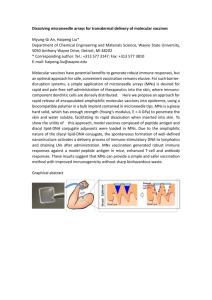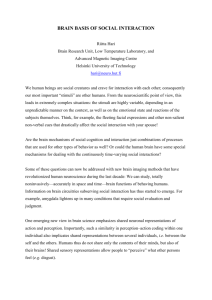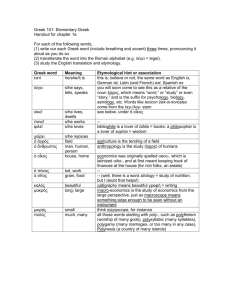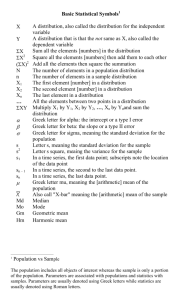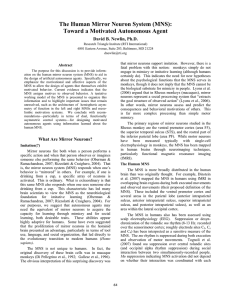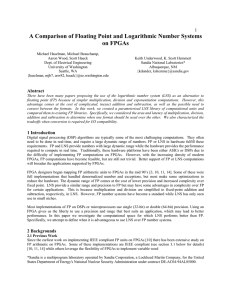The chromatic spectral sequence 1 Nima Rasekh
advertisement
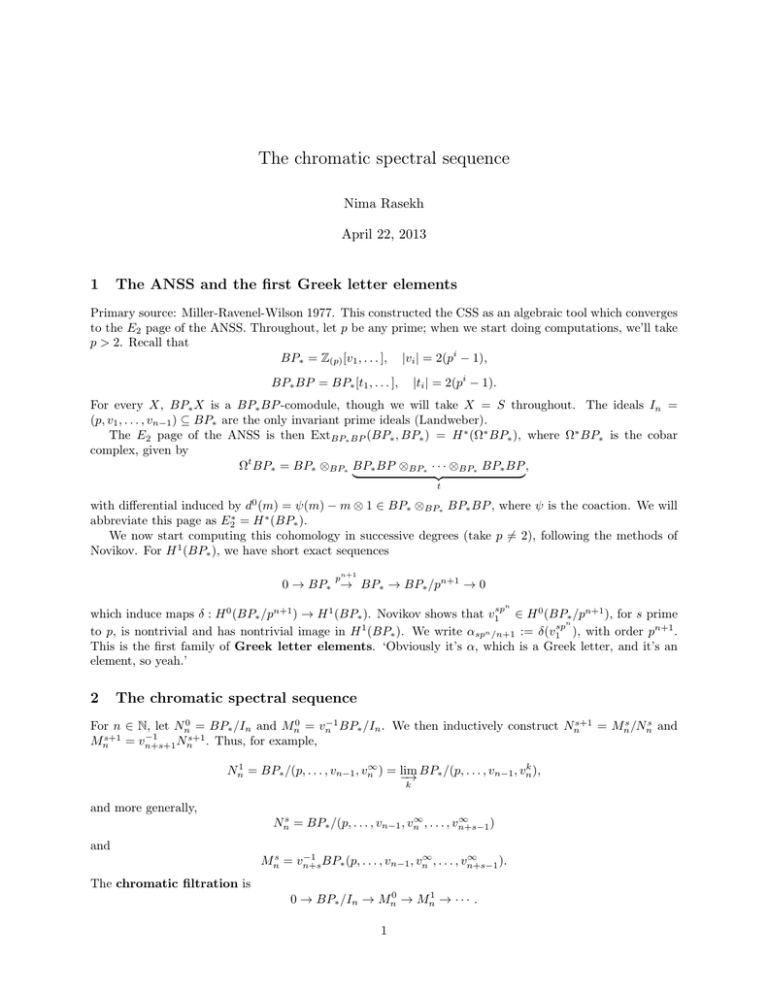
The chromatic spectral sequence
Nima Rasekh
April 22, 2013
1
The ANSS and the first Greek letter elements
Primary source: Miller-Ravenel-Wilson 1977. This constructed the CSS as an algebraic tool which converges
to the E2 page of the ANSS. Throughout, let p be any prime; when we start doing computations, we’ll take
p > 2. Recall that
BP∗ = Z(p) [v1 , . . . ], |vi | = 2(pi − 1),
|ti | = 2(pi − 1).
BP∗ BP = BP∗ [t1 , . . . ],
For every X, BP∗ X is a BP∗ BP -comodule, though we will take X = S throughout. The ideals In =
(p, v1 , . . . , vn−1 ) ⊆ BP∗ are the only invariant prime ideals (Landweber).
The E2 page of the ANSS is then ExtBP∗ BP (BP∗ , BP∗ ) = H ∗ (Ω∗ BP∗ ), where Ω∗ BP∗ is the cobar
complex, given by
Ωt BP∗ = BP∗ ⊗BP∗ BP∗ BP ⊗BP∗ · · · ⊗BP∗ BP∗ BP ,
{z
}
|
t
0
with differential induced by d (m) = ψ(m) − m ⊗ 1 ∈ BP∗ ⊗BP∗ BP∗ BP , where ψ is the coaction. We will
abbreviate this page as E2∗ = H ∗ (BP∗ ).
We now start computing this cohomology in successive degrees (take p 6= 2), following the methods of
Novikov. For H 1 (BP∗ ), we have short exact sequences
pn+1
0 → BP∗ → BP∗ → BP∗ /pn+1 → 0
n
which induce maps δ : H 0 (BP∗ /pn+1 ) → H 1 (BP∗ ). Novikov shows that v1sp ∈ H 0 (BP∗ /pn+1 ), for s prime
n
to p, is nontrivial and has nontrivial image in H 1 (BP∗ ). We write αspn /n+1 := δ(v1sp ), with order pn+1 .
This is the first family of Greek letter elements. ‘Obviously it’s α, which is a Greek letter, and it’s an
element, so yeah.’
2
The chromatic spectral sequence
For n ∈ N, let Nn0 = BP∗ /In and Mn0 = vn−1 BP∗ /In . We then inductively construct Nns+1 = Mns /Nns and
−1
Mns+1 = vn+s+1
Nns+1 . Thus, for example,
Nn1 = BP∗ /(p, . . . , vn−1 , vn∞ ) = lim BP∗ /(p, . . . , vn−1 , vnk ),
−→
k
and more generally,
∞
Nns = BP∗ /(p, . . . , vn−1 , vn∞ , . . . , vn+s−1
)
and
−1
∞
Mns = vn+s
BP∗ (p, . . . , vn−1 , vn∞ , . . . , vn+s−1
).
The chromatic filtration is
0 → BP∗ /In → Mn0 → Mn1 → · · · .
1
2
This gives us a spectral sequence as usual,
converging to H ∗ (BP∗ /In ). For instance, we could define the
L
u
chromatic cobar complex as Cn = s+t=u Ωs Mnt . This is a bigraded complex, where each column comes
from the chromatic filtration, and each row is the cobar complex for some Mns . Taking the cohomology in
the column direction gives us H ∗ (BP∗ /In ) on E1 = E∞ , which is what we want. Taking the cohomology in
the row direction gives us E1s,t = H s Mnt .
To continue, we first generalize the Greek letter construction, which was a map H 0 N01 → H 1 BP∗ . Let
n
spn
v1 /pn+1 ∈ BP∗ /(p∞ ) be the image of v1sp ∈ BP∗ /(pn+1 ) (this explains the notation), and generalize this
to allow denominators with powers of vi . The boundary maps on cohomology induced by the short exact
sequences 0 → N0s−1 → M0s−1 → N0s → 0 induce maps
H t N0s → H t+1 N0s−1 → H t+2 N0s−2 → · · · .
The composition of s of these maps is a map η : H t N0s → H t+s BP∗ . We define
!
vsup
(s)
= αu/i0 ,...,is−1 ,
η
is−1
pi0 v1i1 · · · vs−1
where by α(s) we mean the sth Greek letter (so α(2) is also written β, and so on). The sth Greek letter
elements live in H s (BP∗ ). Note that we need to show, in general, that these elements are nonzero – not all
of them necessarily exist.
Work of Landweber generalized this to other regular sequences A = (a0 , a1 , . . . ) in BP∗ , satisfying certain
conditions that give the Mns comodule structures and so on. Under these conditions, we can likewise do the
work of the above paragraph, and get a map ηA and ‘A-Greek letter elements’ in H ∗ (BP∗ ). Landweber
showed that these are always the usual Greek letter elements: the map ηA factors through η.
The last step is to understand H 0 N0s . Note that there are exact sequences
v
n
s−1
0 → Mn+1
→ Mns →
Mns → 0,
where the first map just formally divides everything by vn . Adding these together gives an exact couple and
thus a spectral sequence. It’s maybe simpler, however, to just say that we’re using the long exact sequence
on cohomology
s−1
0 → H 0 Mn+1
→ H 0 Mns → · · · → H t Mns
and inducting on s. It remains to understand
−1
0
Mn+s
= vn+s
BP∗
.
(p, . . . , vn+s−1 )
We now use the Morava change of rings theorem, which gives an isomorphism
H ∗ Mn0 = ExtK(n)∗ K(n) (K(n)∗ , K(n)∗ ).
This last group is, in principle, computable. Armed with this information, and after doing substantial
algebra, we can find the Greek letter elements in H ∗ (BP∗ ). This has been done up to H 2 , i.e. for α and β,
and this has been the state of knowledge on this problem since 1977. Good luck, young mathematician.
